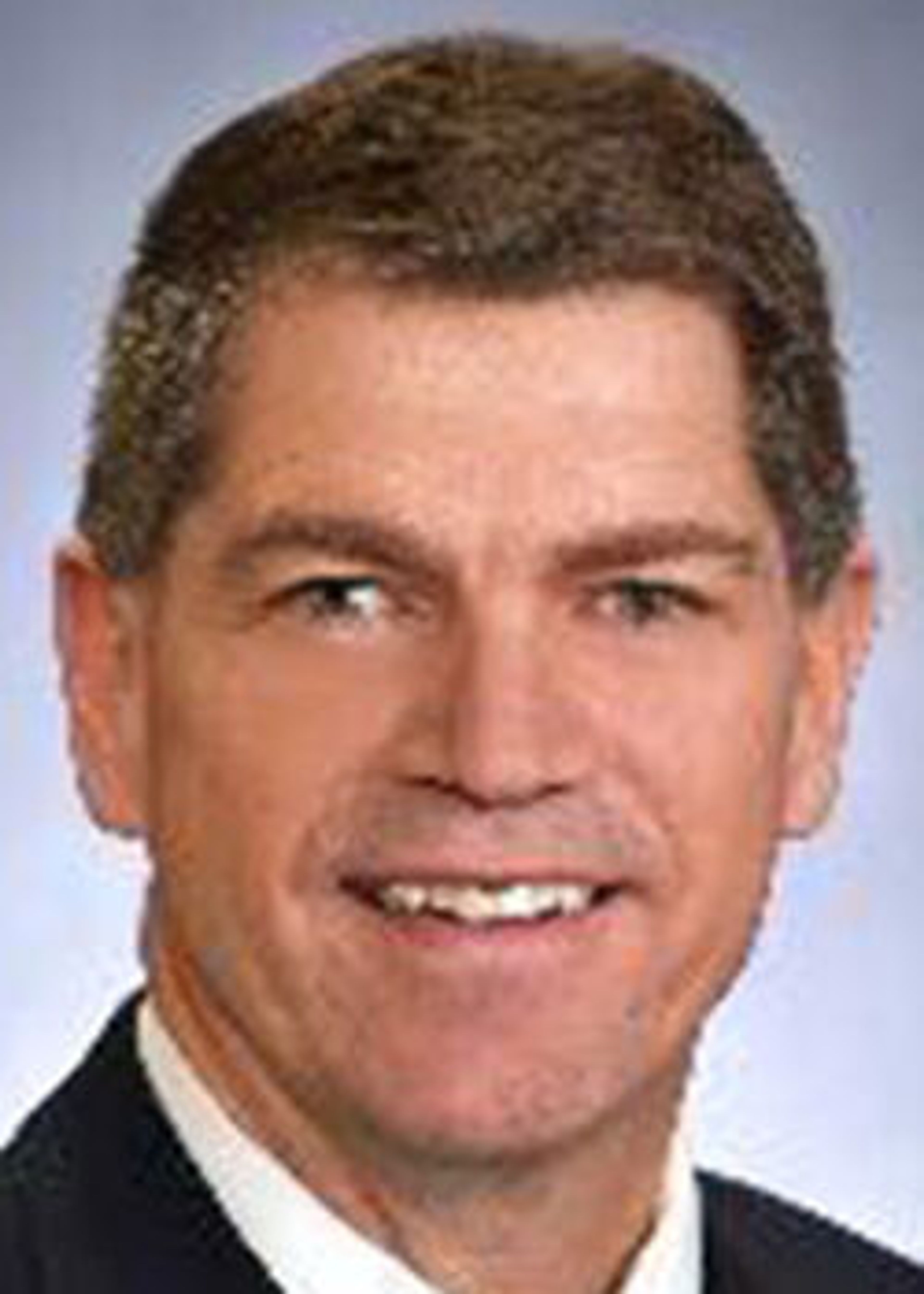Budget officials tackle uncertainty in predicting revenue
Economic committee’s 2023 estimates range by about $650 million; 2024 forecast saw about $1.14 billion in discrepancies
BOISE — Although no one at the Idaho Capitol can see into the future, lawmakers are tasked with doing the best they can each year as they try to predict how much revenue will come in and set a budget based on that number. This year, the job seems to be exceptionally difficult.
“As we had the different agencies and businesses and colleges come in, they were kind of polarized,” said Sen. Kevin Cook, co-chairperson of the Economic Outlook and Revenue Assessment Committee. “Usually it’s a little bit closer but this year there was quite some divergence.”
The joint committee comes up with its own revenue forecast, separate from the governor’s prediction. Its members’ individual estimates varied wildly this year, with fiscal year 2023 estimates ranging by about $650 million and fiscal 2024 estimates ranging by about $1.14 billion.
“When I see that range, I think there’s just a lot of uncertainty out there,” Erin Phipps, budget analyst for the Legislative Services Office, said at the committee’s Thursday meeting.
The uncertainty revolves around whether — or how much — the economy will slow down; if there is a current budget surplus; any recent tax cuts; and conflicting economic indicators.
However, despite the range and despite the median prediction of the committee’s voting members landing $244 million above the governor’s 2023 estimate and $708 million above his 2024 estimate, the committee voted Thursday to approve the governor’s recommendation.
Democratic members of the economic outlook committee have argued the revenue prediction process is politicized to restrict spending.
Over the past couple of weeks, members have been hearing from a number of experts — including private businesses, state agencies, university economists and others — in order to make their own predictions.
Currently, the state has a budget surplus of more than $1 billion. However, recent tax cuts and increased ongoing funding for education will reduce the state’s revenue going forward.
There are also the questions that economists have been arguing about lately: Is the nation currently in a recession? Will it be soon? If so, for how long?
Robert Spendlove, senior economist at Zions Bank, pointed out in his presentation to lawmakers that the nation’s Federal Reserve Chair Jerome Powell had said earlier this year “no one knows” if raising of interest rates will cause a recession, and if so, how long it will be.
“When you’re looking at the top economist in the world, and he doesn’t know, so what I always say, is anyone that tells you that they know, you shouldn’t believe them,” Spendlove said in an interview.
In Gov. Brad Little’s proposed budget, which he presented Monday, his office forecast a 5.3% decline in revenues for fiscal year 2023. The fiscal year runs from July 1 to June 30.
The proposal predicts another 5.5% decrease in revenues for fiscal year 2024, coming in around $5.4 billion.
Actual revenue for 2022 is about $6.2 billion; last year, the governor’s estimate was around $5.2 billion.
Experts who presented their predictions to the committee were wide-ranging.
The University Forecasting Committee, which comprises economists from the state’s universities, also expected about a 5% decline in revenue for fiscal year 2023. The group expected revenue to stay nearly flat going into fiscal year 2024, with a 0.29% decline.
The Idaho State Tax Commission, which collects the state’s tax revenue, predicted a 4.5% increase in revenues going into fiscal year 2023, and 2.8% growth in fiscal year 2024.
“These people are all over the place,” said Rep. John Vander Woude, R-Nampa, who sits on the committee.
Lawmakers make their predictions
Each member came up with their own individual projection and submitted it an hour before the governor’s prediction was released.
Vander Woude said his projection came in higher than Little’s. He expected growth to slow down from where it has been, but he still sees revenues coming in slightly higher. He said the federal funding will continue flow for infrastructure, and he expects inflation to increase sales tax revenues. Overall, he’s fairly optimistic about Idaho’s economic future over the next couple of years, although he does expect things to slow down.
Cook said, given the ranging estimates he heard, he said he felt safer going to the more conservative side of the spectrum. His estimate included a small reduction in revenue, around 2.1%.
“I’d sure like to have extra money over, than not have any money,” he said.
Sen. C. Scott Grow, R-Eagle, who sits on the economic outlook committee and co-chairpersons the budget writing committee, said his prediction came in more optimistic. He said he spent three days training on forecasting and budget setting and listened to several national economists who had a sunnier outlook on the national economic situation.
He also pointed to businesses like Micron bringing workers to the state.
“I think we’re going to be in good shape,” Grow said.
However, at the meeting, he moved to take the governor’s recommendation. He said he believed several of the members did not take into account the $410 million in new ongoing spending for education that the Legislature approved during its September special session.
He noted that last year he had questioned why the group even met if it always accepted the governor’s forecast, but said the high level of uncertainty made him want to go with the most cautious approach.
Assistant House Minority Leader Rep. Lauren Necochea was optimistic — estimating about a 4.5% increase next year. While she also assumes there will be a slowing in growth, she thinks revenue will continue to grow, as forecasted by many of the experts who presented to the committee, Necochea said.
She asked the committee vote to approve the median estimate, which was about $6.11 billion, and expressed frustration about the committee’s tendency to underestimate revenues.
History of underestimating
Necochea pointed to last year’s committee estimates, reviewed by the Daily News, which show that all but one committee member had an estimate that exceeded the governor’s, which forecasted a 3.6% growth for fiscal year 2022.
Although the committee median for individual predictions was about 5.5% up from the previous year, members voted to approve the 3.6% forecast. The estimate came in around $1 billion short of the actual revenue received last year.
“The fact that the governor lowballed the revenue a year ago led to a huge surplus, but it took away what we could’ve done for schools this current year,” she said in an interview.
She and other Democrats last year had the same grievance about last year’s adopted revenue forecast — less money estimated means less to work with when providing services, they said.
“This feels like another year to engineer a surplus that the governor can then tout, but it takes opportunities away from the Legislature to solve urgent problems for Idahoans,” Necochea said.
Vander Woude said he would prefer a system where committee members could put what they think actual revenues will be and what should be spent. Some members prefer the low estimate in order to “be a little more cautious,” he said.
“Traditionally, we try to guess low because we’re afraid JFAC (the Joint Finance-Appropriations Committee) is going to spend all the money we think we’re going to have,” he said.
Economic uncertainty
Although predictions were wide-ranging, most lawmakers and experts predict some kind of slowdown in the coming year.
Historically, a key indicator that the economy is slowing down is two straight quarters of declined gross domestic product. This happened in the first two quarters of 2022, but then in the third quarter it raised again.
“Our measure of GDP is broken,” Spendlove said.
He said most historical markers for determining a recession are not working properly because of the unusual distortions created by the pandemic. He also noted that rising interest rates would normally slow the labor market, but the most recent reports show the opposite happening.
In the University Forecasting Committee presentation, Kyle Brookman, lecturer at Boise State University, highlighted some counteracting economic forces. Going against the economy are persistent inflation, monetary tightening, high interest rates and elevated uncertainty, he said. However, some economic “tailwinds” are that inflation is trending back down, consumer demand is favoring the service sector, supply chain issues are easing and the labor market is strong.
Spendlove said his advice to legislators is to be careful about spending, and perhaps focus on one-time funds rather than ongoing commitments.
“The level of uncertainty is so high that we need to be careful about anticipating where that revenue’s going to go,” Spendlove said.
Where does this leave Idaho?
The experts agreed Idaho is well-positioned to weather an economic storm. While national variables impact the state, Idaho typically outperforms in most key indicators, Brookman said, which includes gross state product and employment.
Spendlove said Idaho’s labor force and business environment lend to its resilience in a potential recession. However, lower income families and small businesses will likely still struggle if the economy significantly slows down, he said.
Alex Adams, administrator of the Division of Financial Management, told reporters at a news conference before the governor’s State of the State address Monday that Little’s proposal anticipates a mild recession. He said the state, with its healthy reserves, especially with the proposed bolstering of the rainy day fund, will be OK.
“I think we all see the storm clouds gathering in the horizon,” Adams said. “While we don’t know what lies ahead of us, we do know that Idaho will weather that storm better than most other states in the country.”
Guido covers Idaho politics for the Lewiston Tribune, Moscow-Pullman Daily News and Idaho Press of Nampa. She may be contacted at lguido@idahopress.com and can be found on Twitter @EyeOnBoiseGuido.



